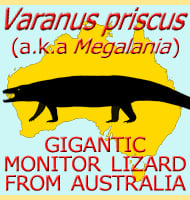Chthonophis
In Depth Although known only from a partial jaw, Chthonophis may represent one of the earliest appearances of an Amphisbaenia lizard. Also known as worm lizards, amphisbaenians are lizards that have lost limbs giving them a superficial resemblance to snakes, although even a basic study of them will reveal several clear differences. Further Reading - … Read more
